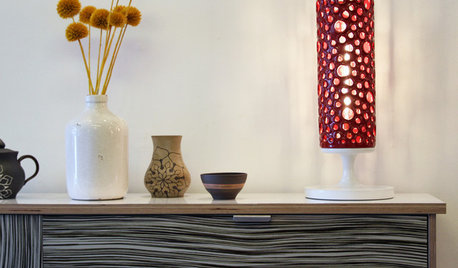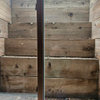Talk to me about sanding, please.
alisande
17 years ago
Related Stories

BATHROOM DESIGNUpload of the Day: A Mini Fridge in the Master Bathroom? Yes, Please!
Talk about convenience. Better yet, get it yourself after being inspired by this Texas bath
Full Story
FALL GARDENINGWhat Monarch Butterflies Taught Me About Garden Design
Thinking like a butterfly leads to fresh perspectives in the garden and in life
Full Story
BATHROOM DESIGNExpert Talk: Frameless Showers Get Show of Support
Professional designers explain how frameless shower doors boosted the look or function of 12 bathrooms
Full Story
TASTEMAKERSShop Talk: Peek in on Brandon Morrison's Lamp-Making Process
Get an up-close and personal view of a Los Angeles lighting designer as he crafts one of his artful table lamps
Full Story
GARDENING GUIDESNew Ways to Think About All That Mulch in the Garden
Before you go making a mountain out of a mulch hill, learn the facts about what your plants and soil really want
Full Story
REMODELING GUIDESHave a Design Dilemma? Talk Amongst Yourselves
Solve challenges by getting feedback from Houzz’s community of design lovers and professionals. Here’s how
Full Story
FUN HOUZZHouzz Call: Tell Us About Your Dream House
Let your home fantasy loose — the sky's the limit, and we want to hear all about it
Full Story
DECORATING GUIDESExpert Talk: Spice Up the Bedroom With Wallpaper
Create charisma for your bedroom with the unmatched patterns and textures of wallpaper, and this insight from pro designers
Full Story
KITCHEN DESIGNExpert Talk: 12 Ways to Get a Designer-Kitchen Look
Professional designer Ines Hanl reveals her thought processes on select kitchen remodels
Full StoryMore Discussions










sombreuil_mongrel
brickeyee
Related Professionals
Plymouth Cabinets & Cabinetry · Bellwood Cabinets & Cabinetry · Horsham Carpenters · Matteson Carpenters · Evergreen Park Carpenters · Sunset Carpenters · Marietta Flooring Contractors · Miami Flooring Contractors · Norwood Flooring Contractors · Petaluma Flooring Contractors · Saint Louis Park Flooring Contractors · Temecula Flooring Contractors · Tucson Flooring Contractors · Duluth Furniture & Accessories · Urbandale Furniture & Accessorieslindac
User
brickeyee